New measure of poverty shows that undoing ACA subsidies will push millions into economic insecurity: Communities of color would be hit hardest by Trump’s health care affordability crisis
A new measure of poverty that accounts for health care needs and resources being developed by the U.S. Census Bureau—the Health Inclusive Poverty Measure (HIPM)—shows that poverty affects even more people in the U.S. than the typical statistics estimate. This is particularly true for people of color. This is primarily a function of the limited access to health insurance that Black and Hispanic communities endure. Black and Hispanic individuals, for example, are more likely than peers to be uninsured and to rely on Medicaid for coverage. This is why we warned about the uneven impact of cuts to the program early this year.
Policymakers are currently debating the merits surrounding the Affordable Care Act (ACA) marketplace subsidies that help more than 20 million people afford health insurance and kept nearly 2 million people out of poverty in 2024. These subsidies were introduced through the American Rescue Plan and extended through the Inflation Reduction Act; they increase the accessibility of health insurance by subsidizing the amount eligible individuals pay for the “benchmark”—i.e., the second-lowest tier plan on a sliding scale with income—such that most individuals making near-poverty wages can access these plans for free.
Allowing the ACA premium enhanced tax subsidies to expire will increase health inclusive poverty across groups, but the impact will be felt most heavily by those for whom accessing health insurance was already precarious. These households are disproportionately Black, brown, and working class because those households sit at the margin of health insurance affordability under normal circumstances and have seen the largest increases in insurance rates during the period when the enhanced tax credits have been available.
Communities of color trying to obtain health coverage now face attacks on two fronts. The more economically vulnerable among them face a more financially constrained Medicaid program with more stringent work requirements, purposefully meant to reduce access to health care. And those fortunate enough to afford care via the ACA marketplace now face the rising prospect of being priced out of coverage if the credits are allowed to expire this month. If the subsidies are allowed to expire, those who previously had free access to the benchmark ACA plans would lose it. The poorest eligible families would see the largest percentage increase in their annual health insurance premiums, while families with higher incomes would experience a higher dollar amount increase.
The end result of this two-pronged attack on public health, not to mention the dismantling of the country’s public health infrastructure that the Trump-Vance administration has carefully orchestrated since coming into office, will be an increase in the number of uninsured individuals, higher economic insecurity for families who need health care but can’t afford coverage, and increased poverty. These forces, as we illustrate below, will affect people of color unevenly.
Health inclusive poverty reveals deeper economic pain than monetary poverty—the attack on Medicaid and health subsidies will make things worseMore than 50 million people struggled with health inclusive poverty last year. This means more than one in seven (14.8%) individuals grappled with economic insecurity because they lack the resources to meet their health and broader needs (see Figure A).
Figure A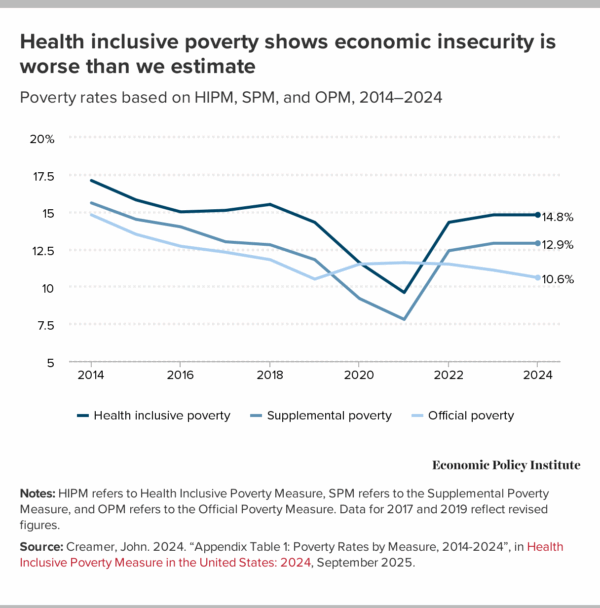
The HIPM produced by the U.S. Census Bureau researchers broadens the basket of goods and services that families need to maintain an adequate standard of living beyond the two measures of poverty that the Bureau publishes annually. These two measures include the Official Poverty Measure (OPM) and the Supplemental Poverty Measure (SPM). While the SPM goes further than the OPM to account for geographic differences in housing costs, tax credits, and government benefits (like SNAP), it doesn’t incorporate health care benefits, subsidies, and expenses like the HIPM. The HIPM therefore enables us to examine the extent to which access to health insurance and key health care subsidies impact the standard of living of individuals and families.
As observed in Figure A, health inclusive poverty has exceeded monetary poverty in the U.S. for the greater part of the last decade. Last year, for example, the prevalence of health inclusive poverty was more than 4 percentage points higher than the incidence of poverty measured by the OPM, and about 2 percentage points higher than the SPM. Access to health insurance serves as a key driver of the differences we observe between estimates of monetary and health inclusive poverty. This is because uninsured individuals have zero health insurance resources to offset the health care needs that the health inclusive measure of poverty introduces to the original poverty thresholds under the SPM.
Recent policy choices under the Turmp-Vance administration are likely to further widen the gap between these measures. The Republican Budget Reconciliation bill is projected to increase the number of uninsured individuals by more than 10 million in the years ahead, and the expiration of health care subsidies under the Affordable Care Act marketplace will quadruple the average net premiums for the more economically vulnerable and increase the number of uninsured individuals by nearly 5 million in 2026.
In 2024 alone, Medicaid kept about 15 million people out of poverty and health care subsidies that made health insurance more affordable for people in the ACA marketplace kept nearly 2 million people out of poverty. Without these support systems, about 17 more million people would have fallen below the poverty line in 2024, pushing the poverty rate from 14.8% to around 19.8%.
Health inclusive poverty affects people of color disproportionatelyBlack, Hispanic, and American Indian and Alaska Native (AIAN) individuals are more than twice as likely as their white peers to face economic hardship due to insufficient resources to meet their health and material needs. Last year, more than one in five Black, Hispanic, and AIAN people fell below the health inclusive poverty line (see Figure B).
Figure B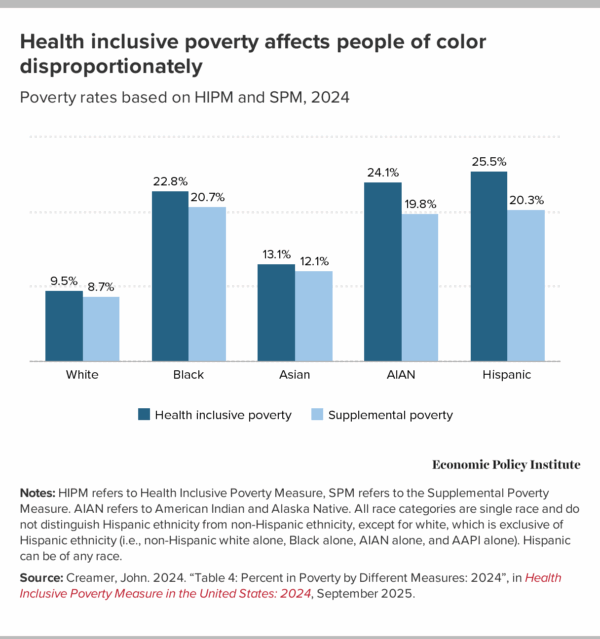
While the prevalence of health inclusive poverty exceeds that of monetary poverty for all racial and ethnic groups, the divide is starkest for Black, Hispanic, and AIAN individuals (as shown in Figure B). Compared with their non-Hispanic white peers, the percentage point difference between health and monetary poverty is more than twice as large for Black individuals and more than five times as large for Hispanic and AIAN individuals. These disparities are driven by unequal access to health insurance, as the uninsured rate is highest for Hispanic, AIAN, and Black individuals. More than one in six Hispanic and AIAN people, for example, lack access to health insurance. These groups are more than three times as likely as their white peers to lack access to health insurance. Slightly narrower, but just as harmful, disparities affect Black individuals. In 2024, more than 3.5 million Black people struggled without access to health insurance.
Statistically meaningful differences between both poverty measures are largest in Southern states, where communities of color make up a relatively larger share of the population. States where social and economic policy have historically been rooted in racism are also less likely to have expanded access to Medicaid. Census researchers find that states with expanded access to Medicaid coverage have health inclusive poverty estimates that are more than 2 percentage points lower than states without expanded access.
Black and brown people, as well as the working class and uninsured, skip or postpone needed health care due to costThe U.S. health care system is designed such that access to adequate and timely care is based on a person’s ability to pay and often based on whether they are employed. Access to health insurance mediates access to health care, and employment is a major mediating factor for access to both health insurance and the income necessary to pay any out-of-pocket costs associated with care. In greed-driven health care systems like ours, poorer workers and their families often forgo or delay treatment that could improve or extend their lives because they can’t afford it.
Black and brown households are more likely to be uninsured, to report difficulties with reporting health care costs, and to report skipping or postponing needed health care within the past year than their white and Asian counterparts. Lack of access to adequate and timely care has long-term economic and health implications for Black and brown families and communities. Policies that threaten the already tenuous connection that marginalized groups have to the health care system, e.g., allowing the ACA premium tax credits to expire and restricting access to Medicaid, will contribute to the persistence of economic and health inequities across race and class.
HIPM underscores the economic and public policy imperative of expanding health care access to prevent povertyThe HIPM captures the impact of overlapping economic and public health policies—or lack of effective policies—on households’ exposure to poverty. It shows how policies like Medicare, Medicaid, and expansions to the Affordable Care Act protect families from financial distress and uncertainty. Racial and geographic differences in the HIPM highlight the variation in adequacy different groups experience across our patchwork health care system. It also helps us identify the impact that recent and ongoing policy choices will have on public health and equity.
The federal cuts to Medicaid that President Trump signed into law this summer, as well as the potential expiration of ACA health insurance subsidies, will disproportionately impact communities of color. Cuts to Medicaid will hurt Black and Hispanic adults and children most, as they are more likely than their peers to rely on Medicaid and CHIP for health insurance. The potential expiration of ACA subsidies will undoubtedly compound health inequities, pushing more than 2 million people of color into ranks of the uninsured. With both private and public options for health insurance falling further out of reach for the most disadvantaged, the administration’s attack on the country’s public health infrastructure will worsen health outcomes, widen disparities, and deepen the growing economic vulnerability of families struggling under Trump’s affordability crisis.

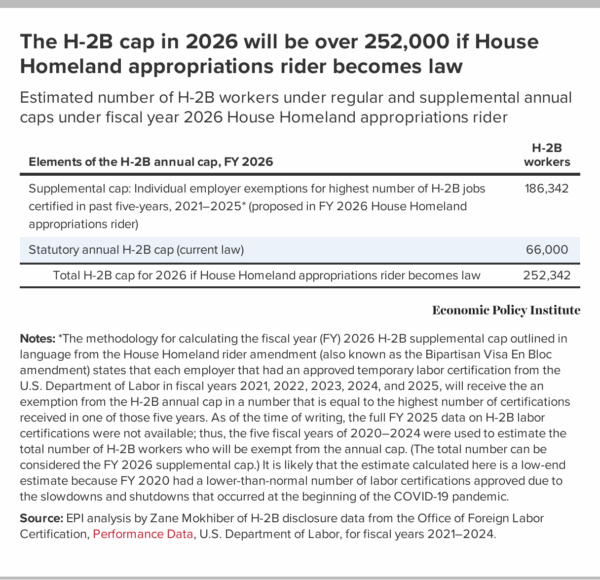 Total number of H-2B workers would reach 282,000 in 2026 if the rider becomes law
Total number of H-2B workers would reach 282,000 in 2026 if the rider becomes law
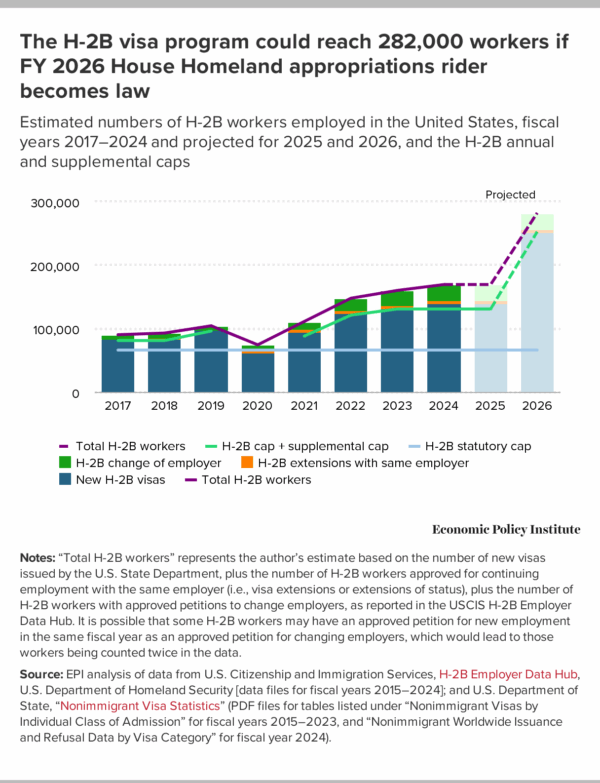 The rider would move 12,000 H-2B jobs to the P visa, which is not administered by the Department of Labor
The rider would move 12,000 H-2B jobs to the P visa, which is not administered by the Department of Labor
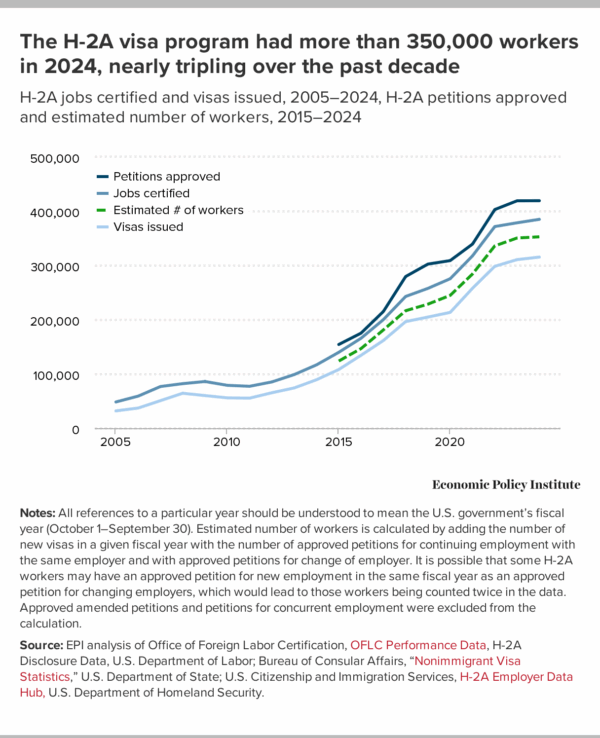
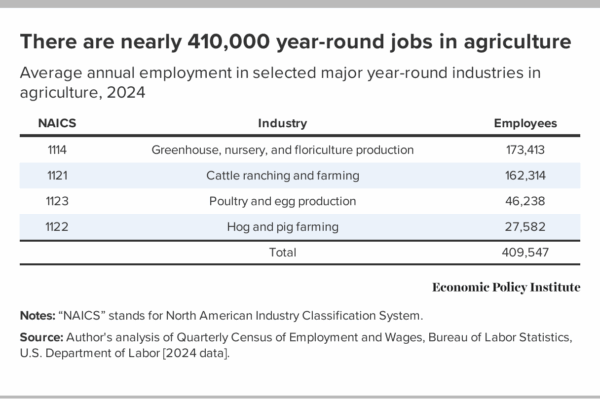 DOL’s new Adverse Effect Wage Rate will result in a pay cut for H-2A workers and U.S. workers that will line the pockets of employers by billions
DOL’s new Adverse Effect Wage Rate will result in a pay cut for H-2A workers and U.S. workers that will line the pockets of employers by billions
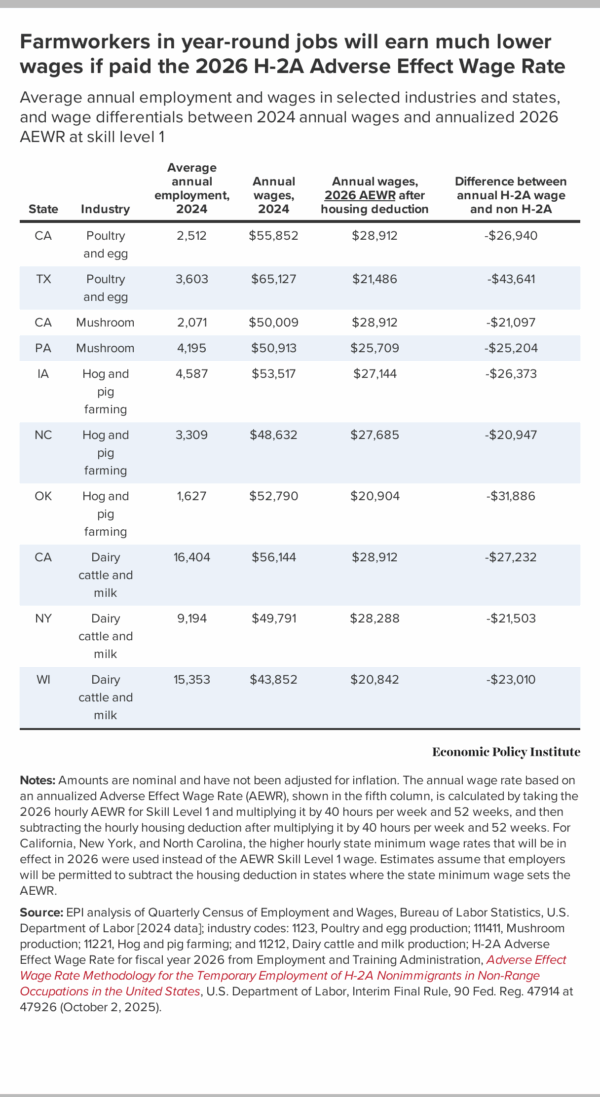 The year-round H-2A rider with the new AEWR rule could triple the current size of the H-2A program and cause wages to drop sharply for farmworkers
The year-round H-2A rider with the new AEWR rule could triple the current size of the H-2A program and cause wages to drop sharply for farmworkers
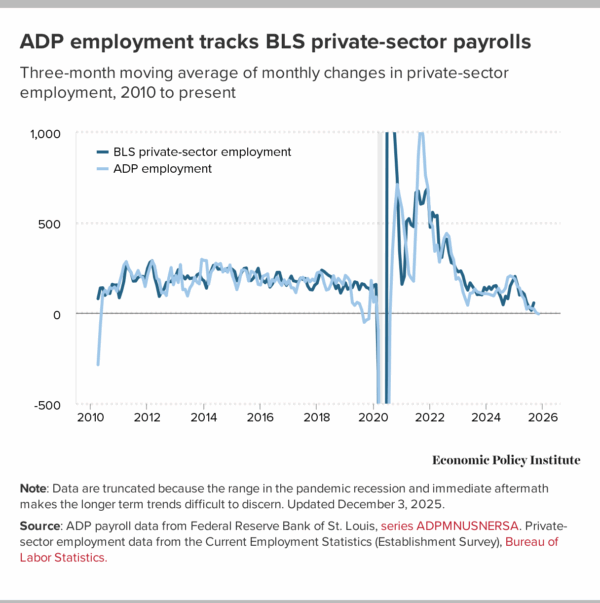
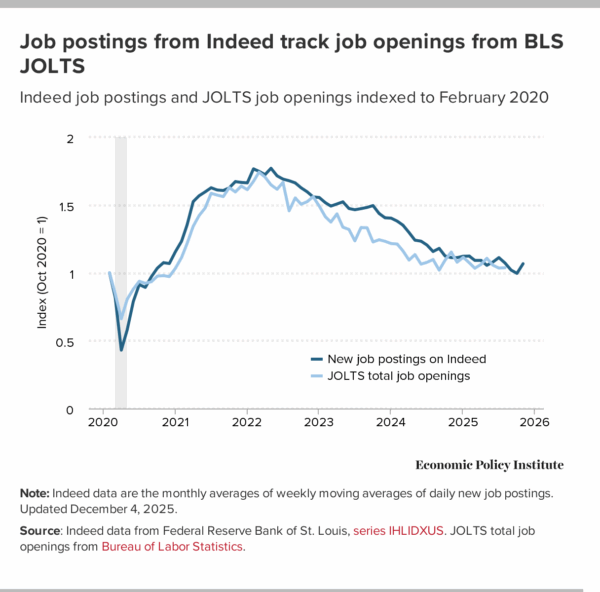
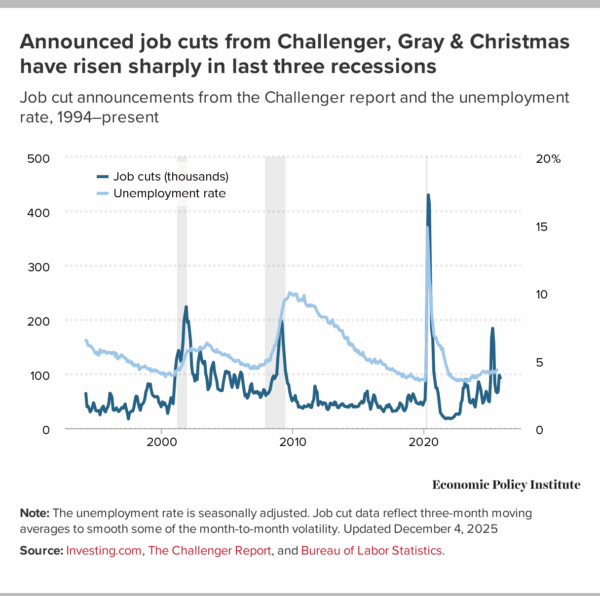 Once the official FSA data are released and hopefully return to a normal schedule, our
Once the official FSA data are released and hopefully return to a normal schedule, our
Recent comments